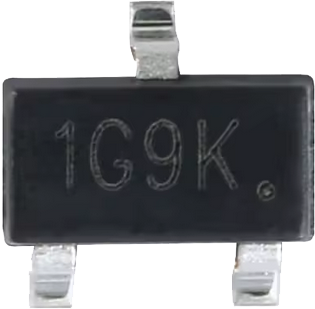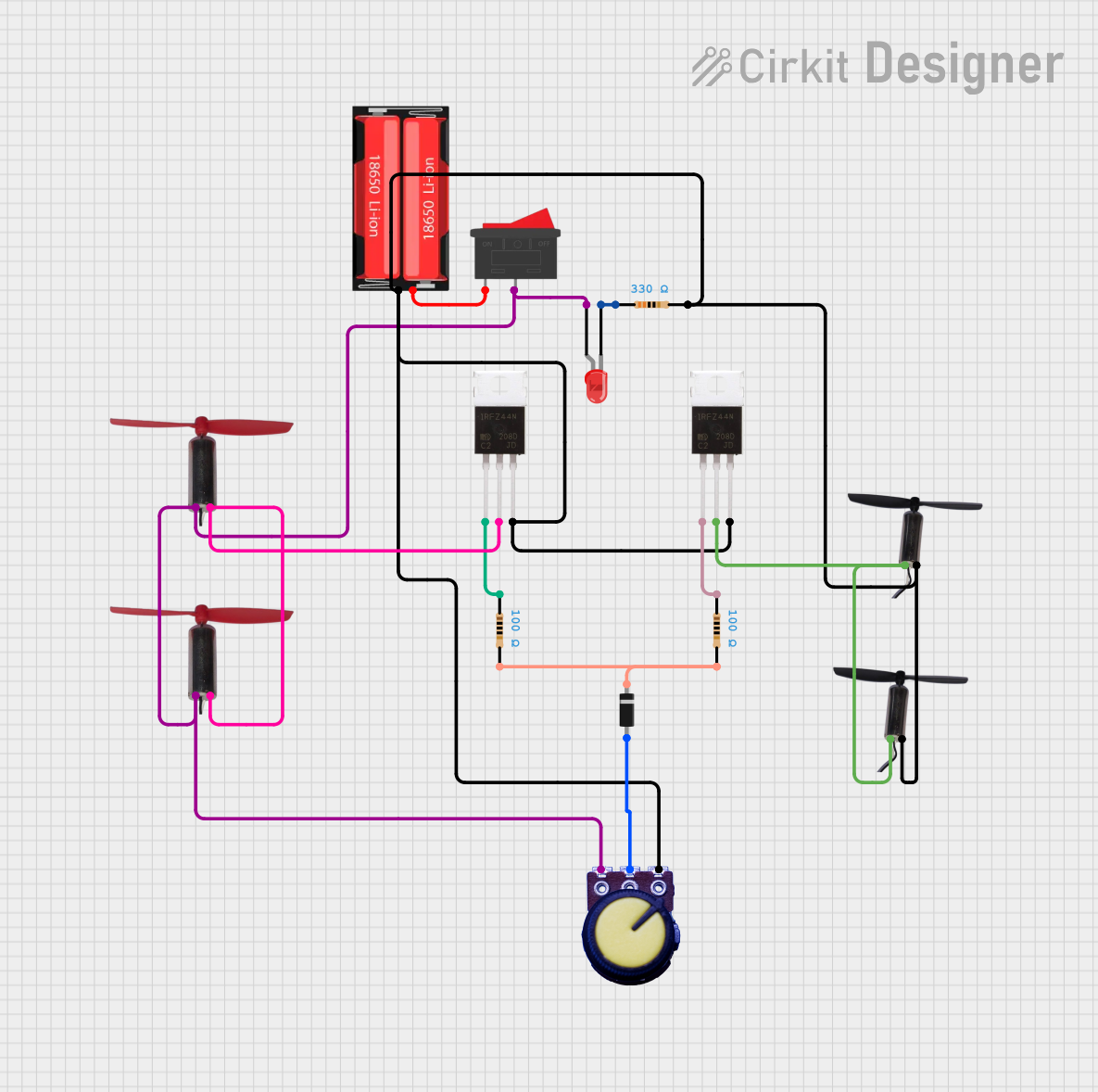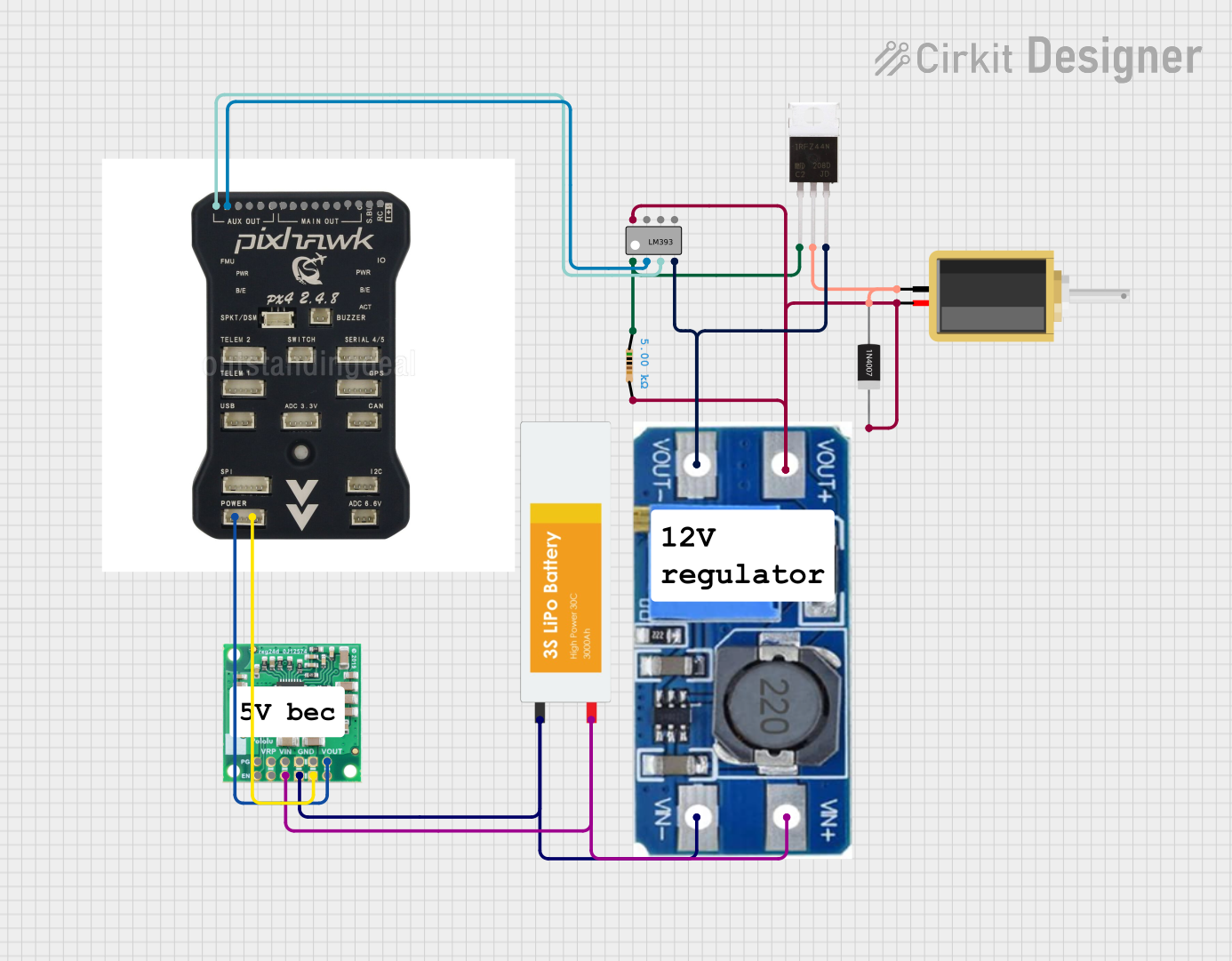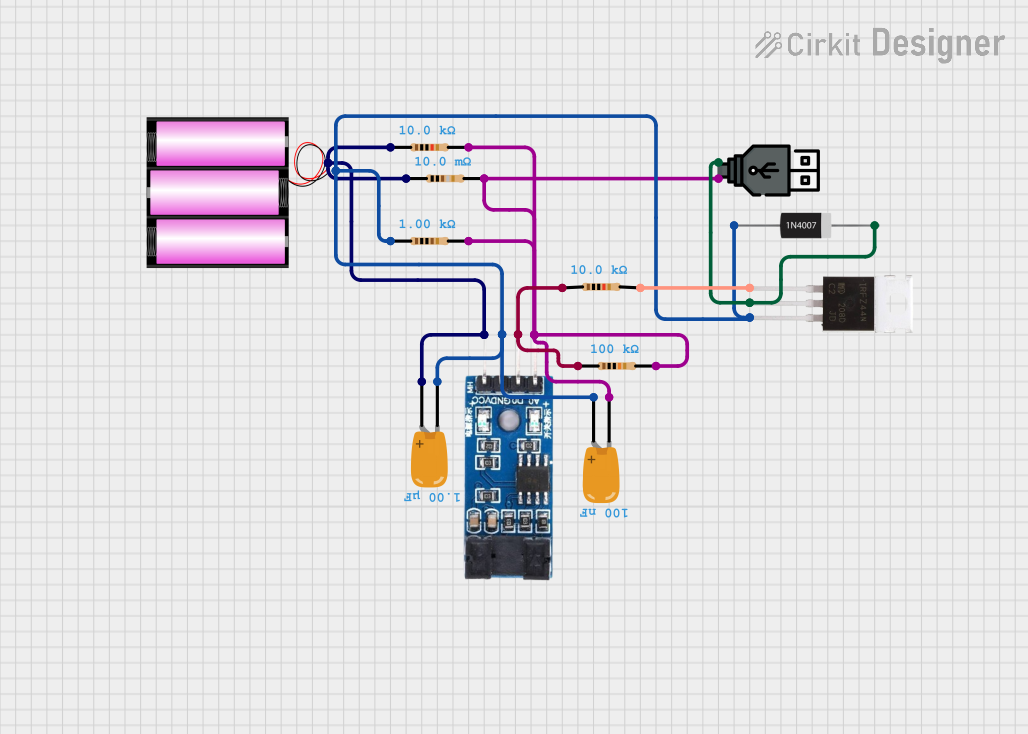
How to Use IRLML2502 N-Channel MOSFET: Examples, Pinouts, and Specs

 Design with IRLML2502 N-Channel MOSFET in Cirkit Designer
Design with IRLML2502 N-Channel MOSFET in Cirkit DesignerIntroduction
The IRLML2502 is a low-voltage N-channel MOSFET designed for high-speed switching applications. It features low on-resistance (RDS(on)) and fast switching times, making it ideal for power management and signal switching in various electronic circuits. Its compact SOT-23 package makes it suitable for space-constrained designs.
Explore Projects Built with IRLML2502 N-Channel MOSFET

 Open Project in Cirkit Designer
Open Project in Cirkit Designer
 Open Project in Cirkit Designer
Open Project in Cirkit Designer
 Open Project in Cirkit Designer
Open Project in Cirkit Designer
 Open Project in Cirkit Designer
Open Project in Cirkit DesignerExplore Projects Built with IRLML2502 N-Channel MOSFET

 Open Project in Cirkit Designer
Open Project in Cirkit Designer
 Open Project in Cirkit Designer
Open Project in Cirkit Designer
 Open Project in Cirkit Designer
Open Project in Cirkit Designer
 Open Project in Cirkit Designer
Open Project in Cirkit DesignerCommon Applications
- DC-DC converters
- Load switching in battery-powered devices
- Signal switching in microcontroller-based circuits
- Motor drivers for small motors
- LED drivers
Technical Specifications
Key Specifications
| Parameter | Value |
|---|---|
| Drain-Source Voltage (VDS) | 20V |
| Gate-Source Voltage (VGS) | ±8V |
| Continuous Drain Current (ID) | 3.4A (at VGS = 4.5V, TA = 25°C) |
| Pulsed Drain Current (IDM) | 12A |
| Power Dissipation (PD) | 1.25W (TA = 25°C) |
| RDS(on) (at VGS = 4.5V) | 0.028Ω |
| RDS(on) (at VGS = 2.5V) | 0.035Ω |
| Operating Temperature Range | -55°C to +150°C |
| Package Type | SOT-23 |
Pin Configuration
The IRLML2502 is housed in a 3-pin SOT-23 package. The pinout is as follows:
| Pin Number | Pin Name | Description |
|---|---|---|
| 1 | Gate | Controls the MOSFET switching |
| 2 | Source | Connected to ground or load |
| 3 | Drain | Connected to the load or power |
Usage Instructions
How to Use the IRLML2502 in a Circuit
- Gate Control: Connect the Gate pin to a control signal (e.g., from a microcontroller or logic circuit). Ensure the control voltage is within the specified VGS range (0V to 8V).
- Drain-Source Path: Connect the Drain pin to the load and the Source pin to ground (for low-side switching) or to the power supply (for high-side switching).
- Gate Resistor: Use a resistor (typically 10Ω to 100Ω) in series with the Gate to limit inrush current and prevent damage to the MOSFET.
- Flyback Diode: For inductive loads (e.g., motors or relays), add a flyback diode across the load to protect the MOSFET from voltage spikes.
Example Circuit
Below is an example of using the IRLML2502 to control an LED with an Arduino UNO:
Circuit Description
- The IRLML2502 acts as a low-side switch for the LED.
- The Gate is connected to a digital pin on the Arduino.
- A 220Ω resistor limits the current through the LED.
Arduino Code
// Define the pin connected to the MOSFET Gate
const int mosfetGatePin = 9;
void setup() {
pinMode(mosfetGatePin, OUTPUT); // Set the MOSFET Gate pin as an output
}
void loop() {
digitalWrite(mosfetGatePin, HIGH); // Turn on the MOSFET (LED ON)
delay(1000); // Wait for 1 second
digitalWrite(mosfetGatePin, LOW); // Turn off the MOSFET (LED OFF)
delay(1000); // Wait for 1 second
}
Important Considerations
- Gate Drive Voltage: Ensure the Gate voltage is sufficient to fully turn on the MOSFET. For optimal performance, use a VGS of 4.5V or higher.
- Thermal Management: If operating near the maximum current rating, ensure proper heat dissipation (e.g., using a PCB with adequate copper area).
- Load Type: For inductive loads, always use a flyback diode to protect the MOSFET from voltage spikes.
Troubleshooting and FAQs
Common Issues and Solutions
MOSFET Not Switching Properly
- Cause: Insufficient Gate voltage.
- Solution: Ensure the Gate voltage is at least 4.5V for full enhancement.
Excessive Heat Generation
- Cause: High current or inadequate heat dissipation.
- Solution: Check the current through the MOSFET and improve thermal management.
MOSFET Fails or Shorts
- Cause: Voltage spikes from inductive loads.
- Solution: Add a flyback diode across the load.
Low Efficiency
- Cause: High RDS(on) due to low Gate voltage.
- Solution: Use a Gate voltage closer to 4.5V or higher.
FAQs
Q1: Can the IRLML2502 be used with 3.3V logic?
A1: Yes, the IRLML2502 can operate with 3.3V logic, but ensure the load current and RDS(on) are within acceptable limits.
Q2: Is the IRLML2502 suitable for high-side switching?
A2: Yes, but you may need a Gate driver circuit to ensure proper Gate voltage relative to the Source.
Q3: Can I use the IRLML2502 for PWM applications?
A3: Yes, the IRLML2502 is suitable for PWM due to its fast switching characteristics.
Q4: What is the maximum load current I can drive?
A4: The maximum continuous current is 3.4A at 25°C, but consider thermal limitations and ensure proper heat dissipation.